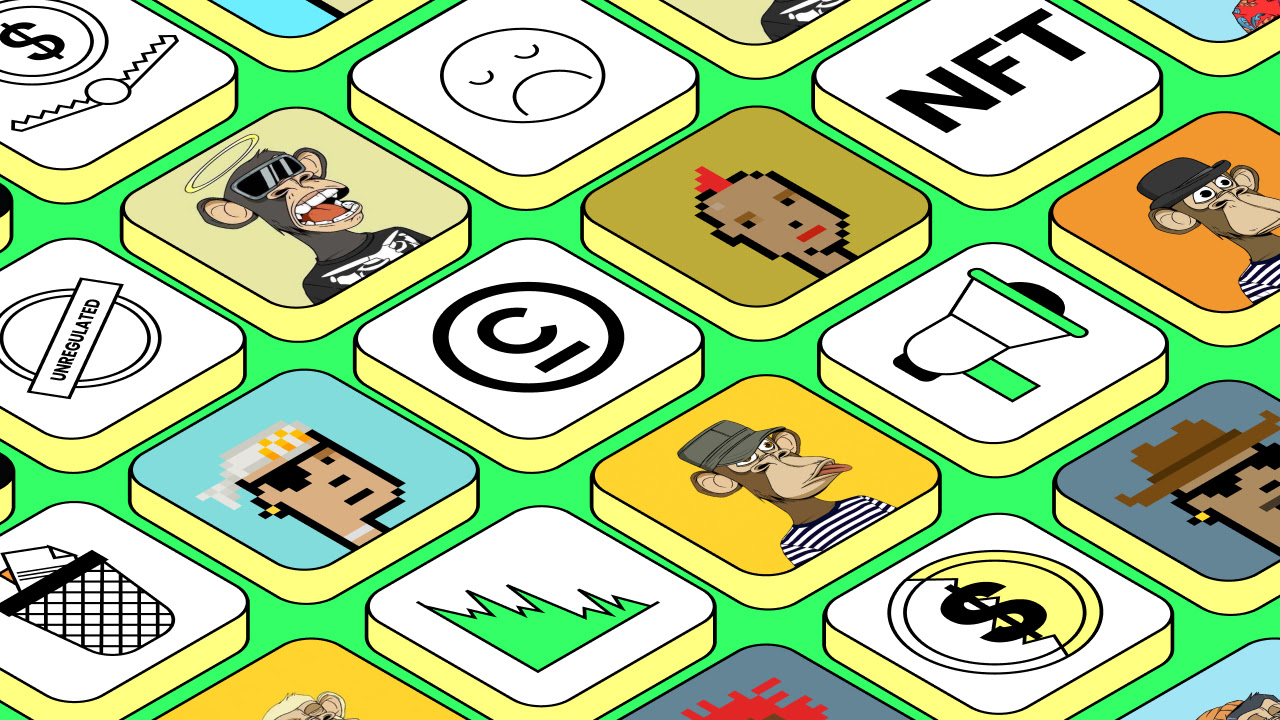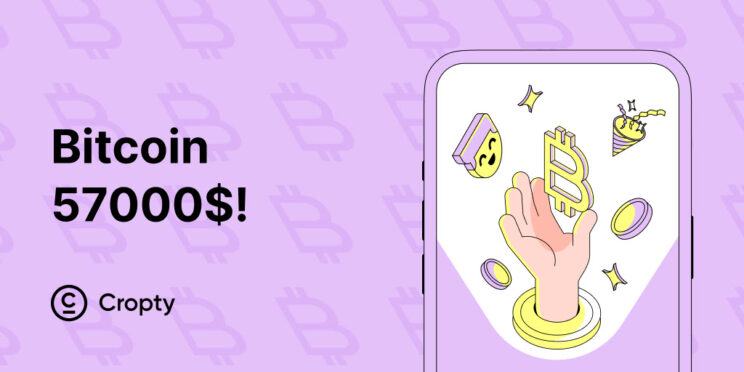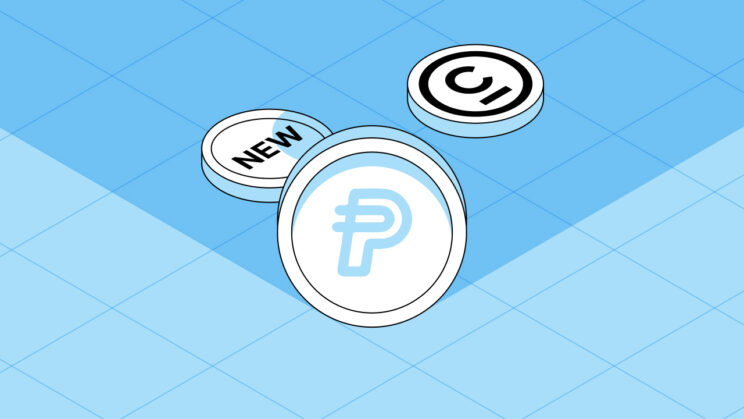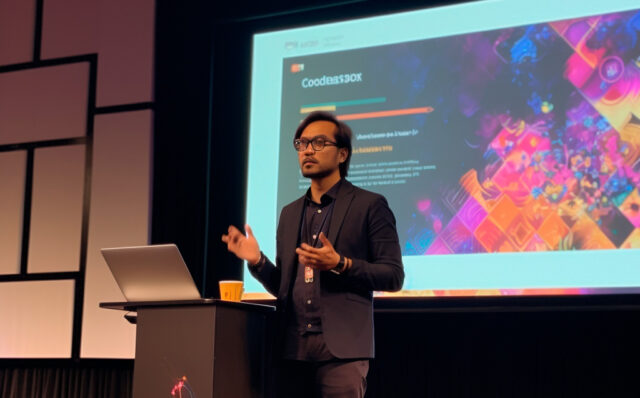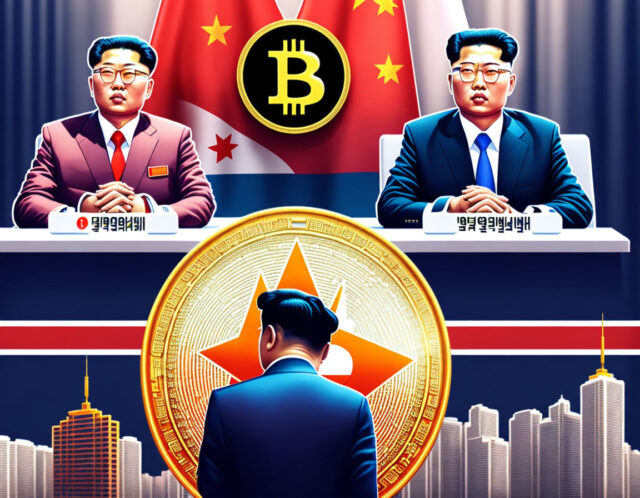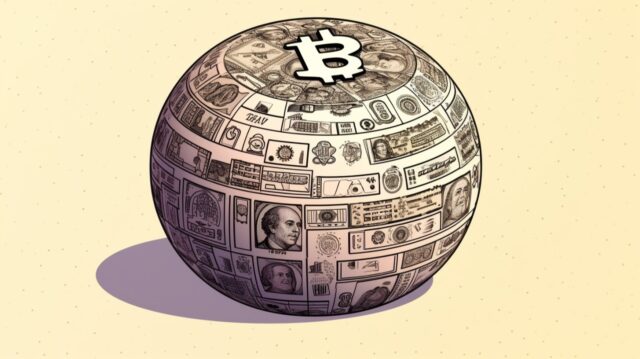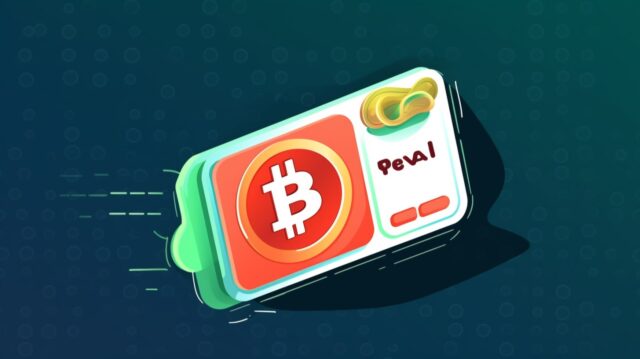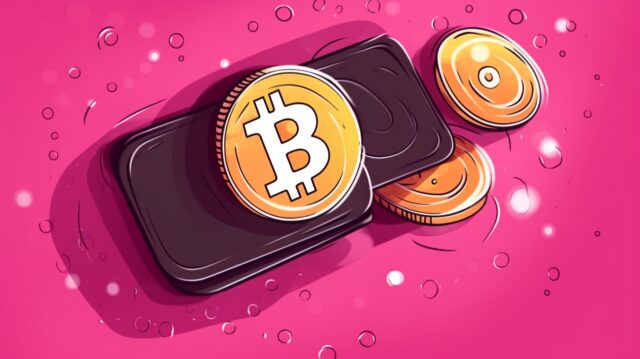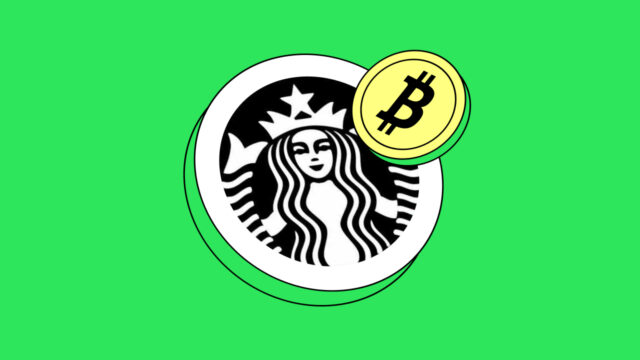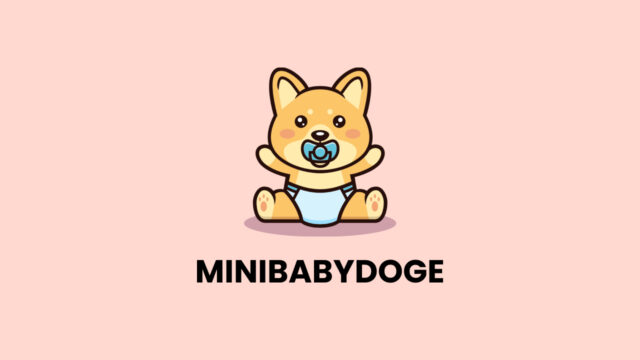Non-fungible tokens have already revolutionized many areas. They have experienced hype, especially as collectibles. But the digital goods are also subject to criticism. They would negatively impact the environment and have no added value. But is that really true? And what else the reasons of why people hate NFTs?
Why do People Hate NFTs So Much?
There is criticism about the environmental aspect because the creation of NFTs consumes a lot of electricity. The close link with cryptocurrencies also leads to NFTs being seen as purely an investment for the rich and speculation-hungry gamblers. But let’s take a broader look at these and other reasons.
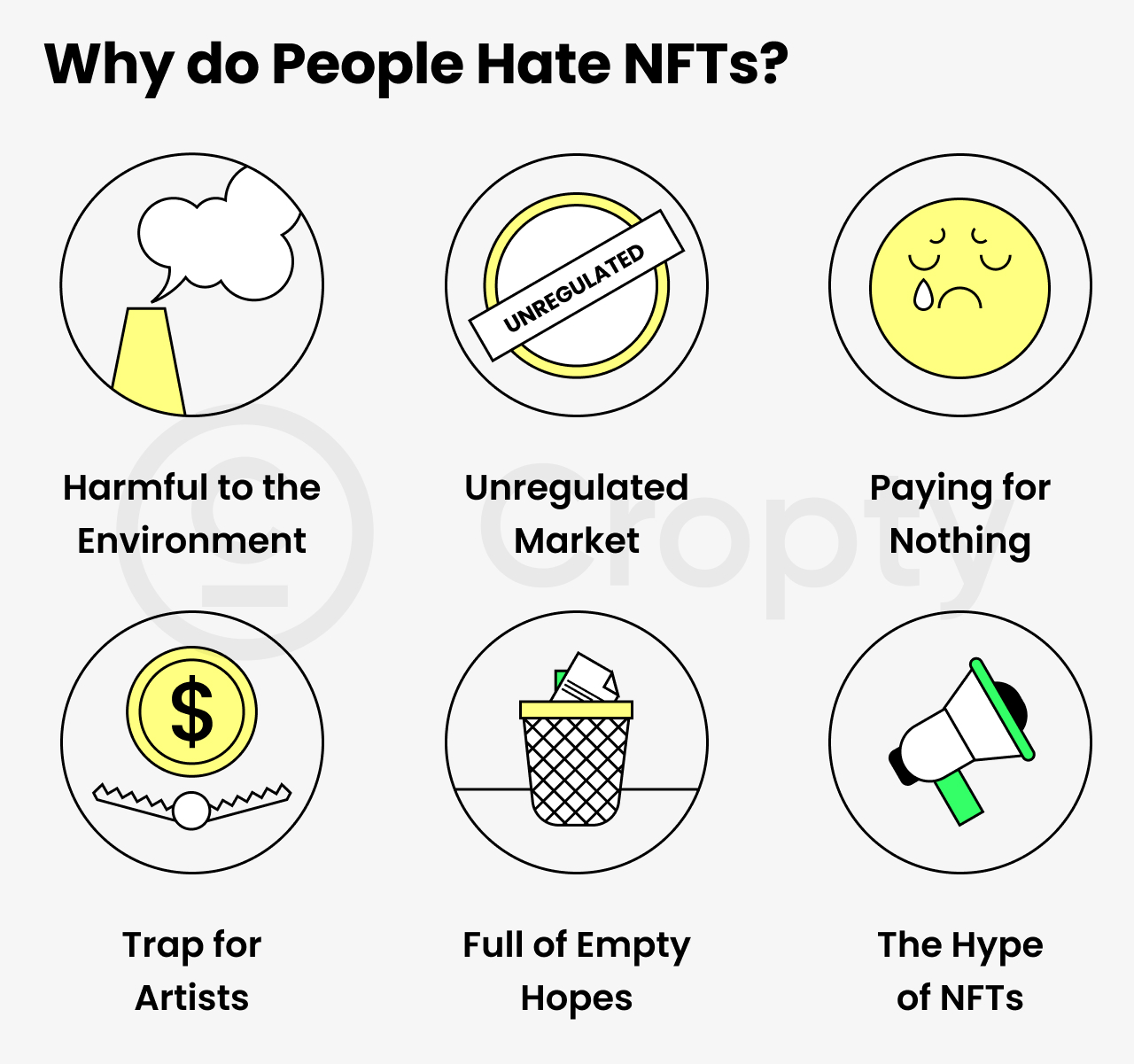
1. Harmful to the Environment
NFTs themselves do not cause any environmental impact, but the way they are manufactured can have a significant impact on the environment. NFTs are typically produced on a digital marketplace: the creator of the NFTs uses a marketplace’s platform to upload the NFT information, which is then converted into tokens and stored in the blockchain. Tokenization creates keys for an asset. The NFT is “minted” through this process.
The next step is to list the NFT. Once the NFT is produced, the creator can offer it on a marketplace. The NFT can be offered at a set price or auctioned off. When the NFT is purchased, a blockchain transaction is initiated. The blockchain network validates the transaction and transfers ownership of the NFT to the new owner.
The criticism of NFTs has been mounting due to their environmental risk. The carbon footprint of some NFTs is equivalent to that of average EU citizens in a two-month period. The reason for this is the large energy consumption of the non-fungible token, especially in the creation of the token and the blockchain that regulates its sale.
2. Unregulated Market
The fact that an NFT is available for purchase does not guarantee actual ownership of an object of value. Since in principle anyone can create and sell NFTs, buyers should inform themselves well in advance about the object and its potential value. Due to the fact that this is a completely unregulated market, the NFTs cannot be regulated.
Thus, the NFTs become a tidbit for crooks who use all kinds of theft in their schemes, from commonplace thefts to rug pulls and pump and dump schemes. And if you lose your money in the NFTs, no one will be able to give it back to you for the reasons described above. Of course, you can sue and hope for the best, but the NFTs remains a huge risk.
3. Paying for Nothing
Another factor is that some people view NFTs as a form of digital asset speculation, as opposed to a reliable source of income. Sometimes the NFTs are traded up between bots. Also the value of the images is often completely nothing, because they are not even on the blockchain. In such cases NFTs are just like buying air, even if you are buying artwork.
Most people who buy NFTs for a lot of money are hoping to resell their assets for even more money in the future. But no one can tell if someone wants to buy your NFTs or if you will have to resell them for next to nothing.
4. Trap for Artists
Continuing to talk about paintings, it is important to mention the fact that in the NFTs field people often steal works of artists or other art creators. Marketplaces like OpenSea give creators the rights to their works, but this is not enough. Unscrupulous people continue to make money by cheating. When you buy such a work of art, you never know if it is stolen, screenshotted or original.
By the way it is important to mention here that the most expensive NFT sold in the world is the artwork The Merge by artist Pak. It was sold for the tidy sum of $91.8 million.
5. Full of Empty Hopes
Most NFTs are stored on the Ether blockchain, for example, WWE NFTs. This means that if you want to set up your project and mine NFTs at a time when the blockchain is overloaded, you will pay a lot of money. If you want to make a profit, you will have to sell your project at a higher price, otherwise you will be left at a loss. So to make the project valuable you will have to spend money on advertising and marketing too. Will you end up with any profit at all? No one can say for sure.
6. The Hype of Non-Fungible Tokens
One of the biggest criticisms for non-fungible tokens has nothing to do with the concept of NFTs but their method of use. From sports leagues like the NBA to celebrities and other entertainment companies, they all sell forms of NFTs. Fans of these groupings often feel that the NFTs they sell have no resale value, but exist only to profit from the hype of non-fungible tokens. Marvel recently came under criticism for advertising a new NFT series of the hero Chakra via the Twitter account of the late Marvel founder Stan Lee. This is said to involve selling images in limited numbers, all of which are supposed to be “unique.” Whether these images differ only in blockchain or are also visually unique is not specified by Marvel.
Gaming publisher Ubisoft also recently stated that it would include NFTs in the game Ghost Recon: Breakpoint. Fans were less than thrilled about this news and accused the publisher on Reddit of only offering the non-fungible tokens out of greed. Reddit also complains that the NFTs have no added value, as they can’t really be exchanged for redeemable cryptocurrency.
According to Bloomberg, through data from Dune Analytics, NFT trading volume is down 97% since the beginning of 2022, with January volume at $17 billion compared to $466 million in September. Let’s take a look to the chart. Here we can claim that the most brilliant hype of NFT was in January 2022, and hardly to say it will be the same in future.
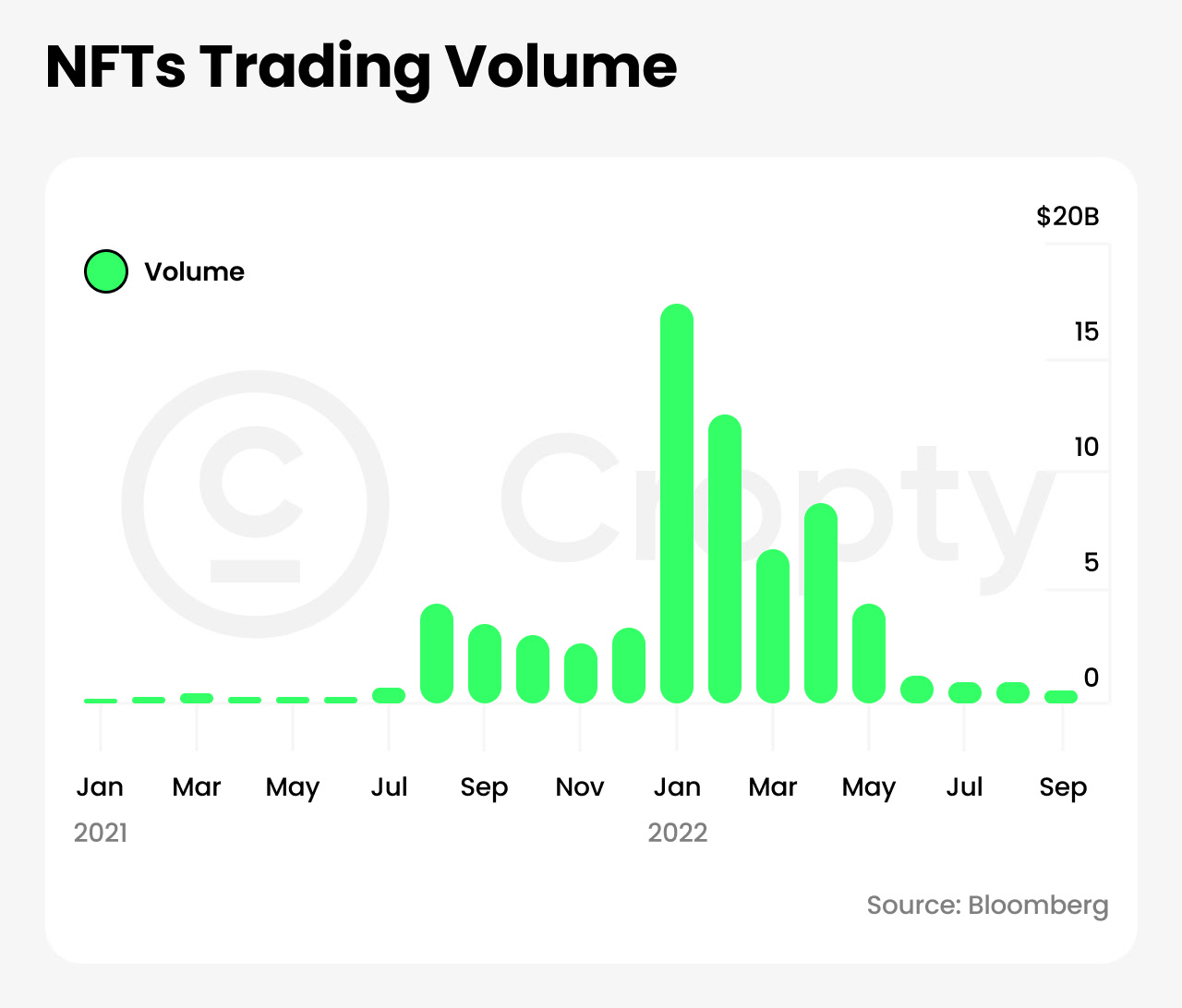
Non-fungible tokens even were mentioned in Southpark series in the episode SOUTH PARK: POST COVID: THE RETURN OF COVID as something over-popular and senseless.
People in The Video Game Industry Hate NFTs
Another group of people who can’t stand NFTs are gamers. This is explained as follows: soon gaming will no longer be a leisure hobby, but a part-time job including market analyses and hourly checks of the stock market price of NFT items.
People are also worried about what will happen when there are more monetary values in a game. Today, after all, you already see AFK bots just joining and leveling to farm skins and the like. How will that look then, when that stuff even has a bit of value?
Currently, games and systems are being developed with a close intertwining of NFTs and cryptocurrencies. In such games, this is exactly what would happen: speculators willing to take risks influence the economy of a game.
Popularity of “NFT”
To sum up it can be concluded that people have stopped trusting non-fungible tokens. Let’s take a look on the Google trends chart from the end of 2020 year till the beginning of 2023 year, where we can see that popularity of NFTs started to fall in spring 2022 and today less and less people google this term. Whether these tokens will really hold their value in future is difficult to say.
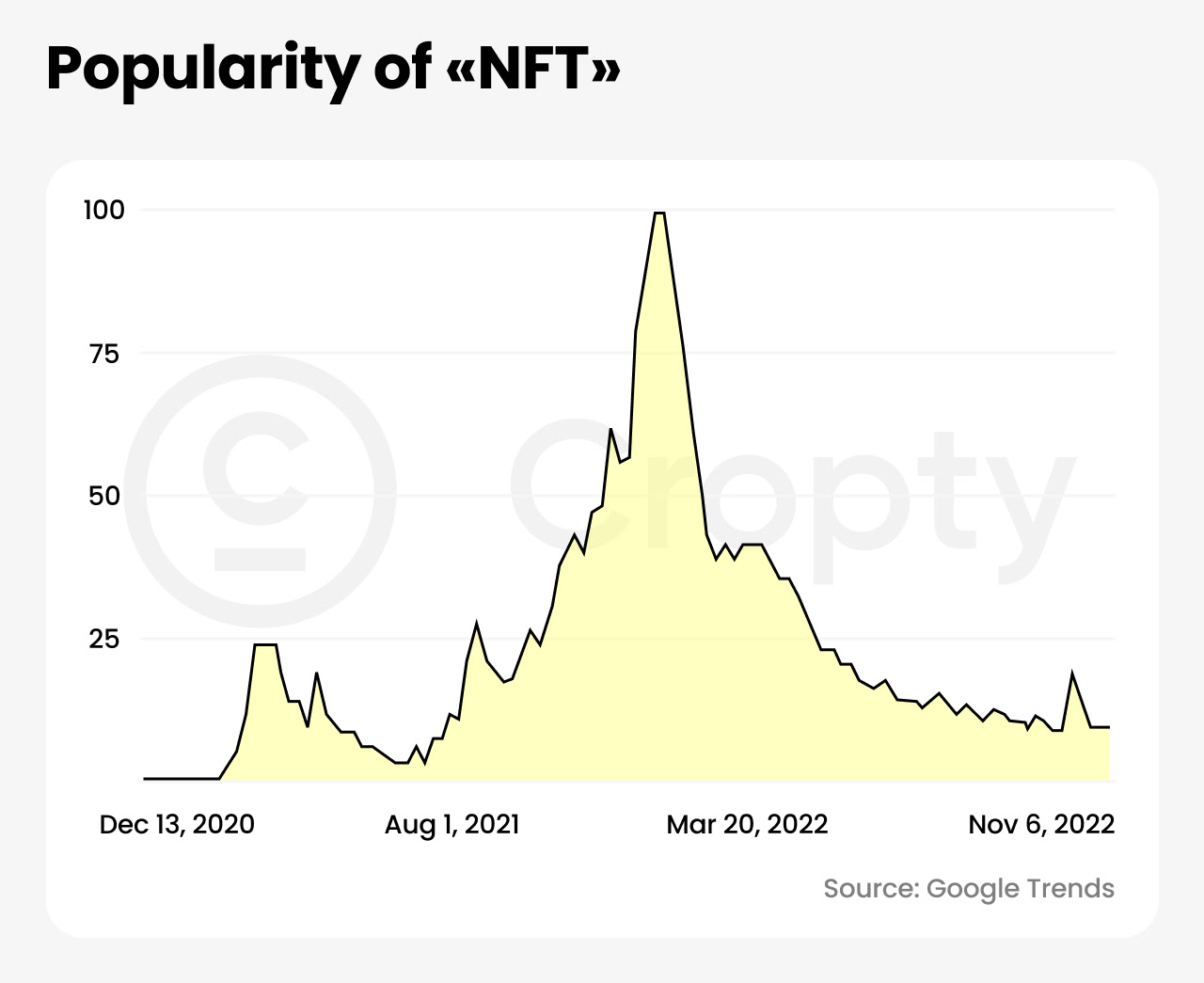
What Are NFT Scams?
A big reason of hating NFTs is NFT scams. Unfortunately, with the development of NFT, more and more fraudsters started to appear in this market, just like in any industry related to cryptocurrency. Moreover, fraud in NFT can involve both the theft of assets from wallets and fraudulent sales. What types of fraud are there in the NFT?
- Rug Pulls
This scam consists of marketing digital assets around a ghost project. The creators of the project announce a limited edition collection of NFTs for sale and promise buyers benefits, such as access to an exclusive private game server.
This attracts the attention of a large number of collectors who are attracted by the potential of the NFT ecosystem as well as the limited nature of the tokens. Raising high expectations, the digital certificates quickly sold at quite high prices even though the collection did not yet exist. However, after a few days, the project disappeared, leaving investors feeling frustrated and ripped off.
- Phishing
In concrete terms, this type of attack allows a scammer to make his victim believe that he is signing a classic approval transaction, when in reality he is delivering the right to list an NFT on the OpenSea marketplace.
- Fake NFTs
Fake NFTs sometimes look like the real one, but still have no value. They may be stolen paintings or low-quality fakes.
Conclusion
NFTs are often sold by identical artworks that only differ in the blockchain, so they are often “technically” different, but not visually. Currently, non-fungible tokens seem to be primarily a status symbol, rather than an investment source. The more companies jump on the NFT hype, the more diluted the market will become. So it will be difficult to say if so many people stop hating NFTs and start believe in non-fungible tokens.
Updated on 01/27/2023: added information about NFT scams.
FAQs
Why do people hate NFTs?
People hate NFTs because it’s harmful to the environment, it is an unregulated market and it’s full of empty hopes.
Why do gamers dislike NFTs?
This is explained as follows: soon gaming will no longer be a leisure hobby, but a part-time job including market analyses and hourly checks of the stock market price of NFT items.
Why are NFTs so problematic?
There is criticism about the environmental aspect because the creation of NFTs consumes a lot of electricity. Changing proof-of-work mining to proof-of-stake mining, NFT platforms will reduce electricity usage.
What is the biggest problem with NFTs?
When you buy NFTs, you never know if it is stolen, screenshotted or original. All works are supposed to be “unique.” Whether these images differ only in blockchain or are also visually unique is not specified.
Why are artists against NFTs?
Artists are against NFTs because they can lose control over their rights of their works and it’s almost possible to trace where their works are faked.
